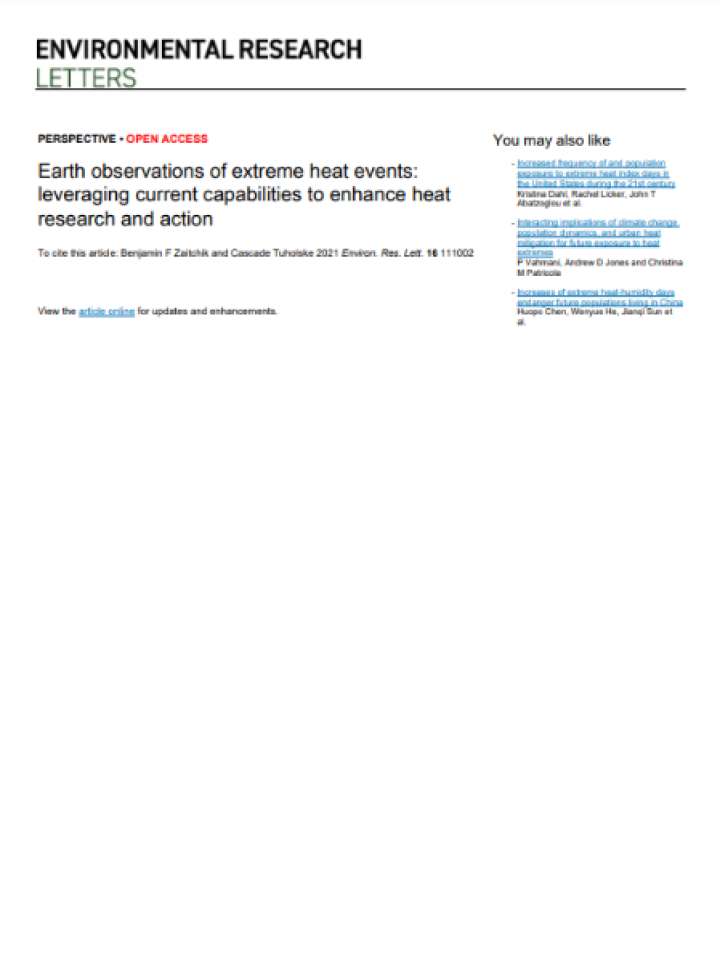Earth observations of extreme heat events: leveraging current capabilities to enhance heat research and action
This paper examines the powerful role that satellite-derived Earth observations (EOs) can play in understanding and preparing for intensified heat extremes. Heat extremes like in the boreal summer of 2021 triggered mass death in ecological systems, pushed engineered systems to the breaking point, and threatened health and well-being of people across the northern hemisphere. It was also a preview of greater extremes to come and an indicator that even wealthy communities are poorly prepared to reduce harm from extreme heat under climate change. In the context of the events in 2021, the study considers EO contributions in four areas: monitoring, attributing, projecting, and adapting to extreme heat events.
The paper finds that the contribution of EO in understanding and managing extreme heat events would benefit from coordination and communication at multiple levels. Firstly, greater integration within the research and observations communities, including work to align environmental observations with data on health and social vulnerability and collaborations that apply high resolution EO to risk monitoring and forecast, climate attribution studies, and climate model development. Secondly, a resourced commitment to transdisciplinary collaboration beyond traditional research communities, to bring stakeholder priorities to bear on the development of EO systems and products and leverages EO to address heat resilience goals. Lastly, communication tools that apply EO to bridge the gap between real-time heat response and future heat risks, such that investments in present day climate services can be leveraged to enhance anticipatory adaptation to increases in extreme heat.
Explore further
